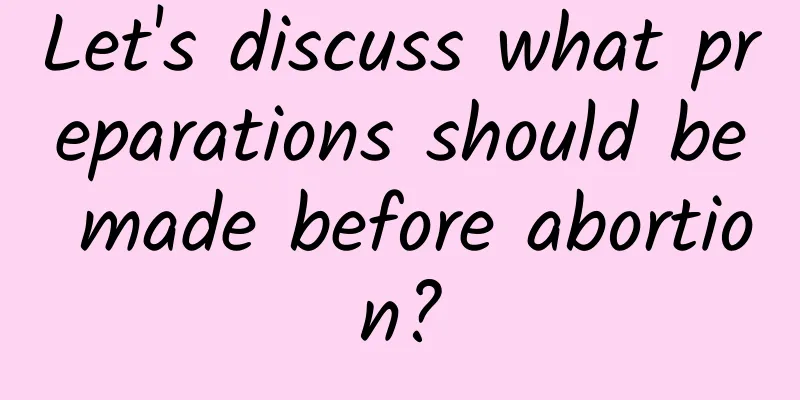Can I have an IUD if I have pelvic effusion?

|
IUD is a contraceptive measure for women who do not have a fertility plan or want long-term effective contraception, and its contraceptive effect is also very good. However, due to the particularity of contraception, it is not suitable for all women. So, can IUD be inserted for pelvic effusion? Can IUD be inserted after pelvic effusion surgery? Under normal circumstances, the time for IUD insertion is 3-7 days after the menstrual period ends. As long as everything is normal during the examination and it is suitable for IUD insertion, you can insert the IUD. However, it is recommended to insert the IUD after the pathological pelvic effusion is cured, and follow up regularly within one year after the IUD insertion to ensure good physical development. The pelvic cavity is a very important reproductive organ for women. It is usually caused by inflammation caused by bacterial infection. If a woman wants to choose an IUD, she must pay attention to the examination before the operation. There are two types of pelvic effusion: 1. Physiological pelvic effusion Physiological effusion often occurs after ovulation or during early pregnancy, and generally disappears naturally without deliberate treatment. Since the pelvic cavity is the lower part of the abdominal cavity in the whole body, when there is exudate or exudate, it will drain into the pelvic cavity, so pelvic effusion is formed. Although there is effusion in the female pelvic cavity, it will not affect the effect of the IUD and any physical discomfort, and the IUD can be inserted. 2. Pathological pelvic effusion Pathological effusion is caused by inflammation. There is inflammatory exudate in the pelvic cavity. If it is not treated in time, it will gradually grow larger and eventually cause various hazards. Since pathological effusion is an inflammation, if an IUD is inserted before it is cured, it will cause physical discomfort and even aggravate the condition. Pathological pelvic effusion should not be treated with an IUD. |
<<: What is the pathogenesis of ovarian cysts?
>>: What are the treatments for cervicitis?
Recommend
Coffee latte has a lot of calories and will ruin your weight loss efforts! Be careful not to supplement calcium but lose calcium
Starting your day with a cup of coffee, it can be...
What should I eat to replenish my blood if I have uterine fibroids? What should I eat to replenish my blood if I have uterine fibroids and anemia?
Uterine fibroids are one of the common gynecologi...
How to prevent infertility after abortion? Why does abortion lead to female infertility?
Why does abortion lead to female infertility? It ...
The key to the treatment of acute adnexitis is prevention
Adnexitis is a multiple inflammation, which is ma...
Diagnosis and Analysis of Bartholinitis
Bartholinitis is an inflammation caused by infect...
Relationship between infection and spontaneous abortion
In our lives, many pregnant women will experience...
What are the dangers of ovarian cysts in women? Should we pay attention to our diet?
Ovarian cysts are common in young to middle-aged ...
What are the causes of non-gonococcal vaginitis infection?
What are the causes of non-gonococcal vaginitis i...
shock! Eat 1 soft serve ice cream = drink 4 tablespoons of oil
The hot summer is the best time to eat ice cream....
How much does it cost to check the fallopian tubes?
In daily life, many women have fertility problems...
Lin Chi-ling's Chinese medicine for skin care and anti-edema is different for upper and lower parts
"Taiwan's No. 1 supermodel" Lin Chi...
8 steps of massage before bed to create supermodel-like slender legs
"The most difficult part of losing weight is...
What are the harms of repeated abortion to women's body?
Today's increasingly open modern life also ha...
Is bacterial vaginosis difficult to cure?
Daily measures to treat bacterial vaginitis. Bact...
How to prevent menopausal dysfunctional uterine bleeding
When women reach around 45 years old, menopause i...









